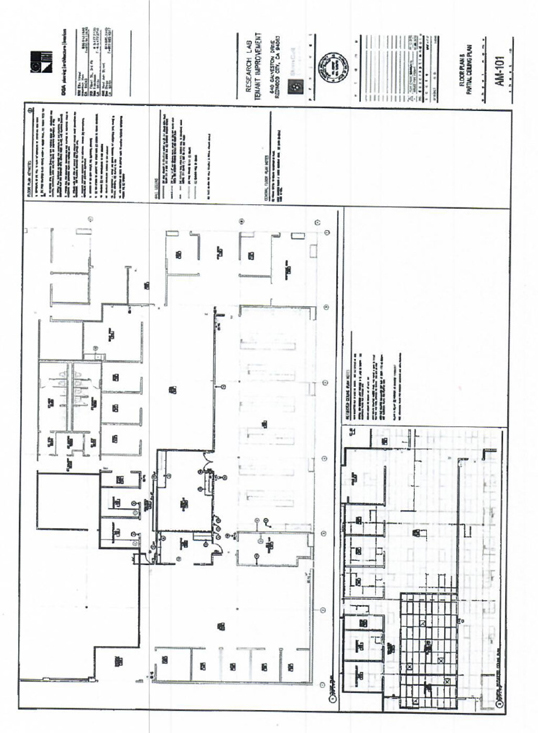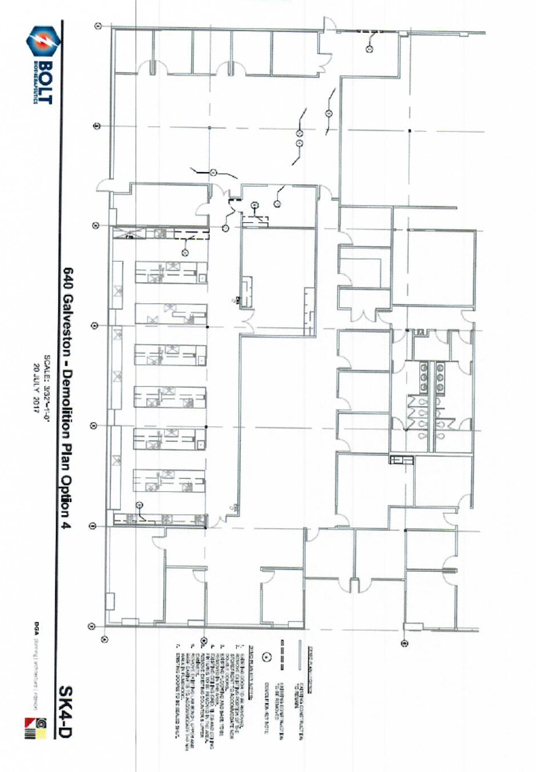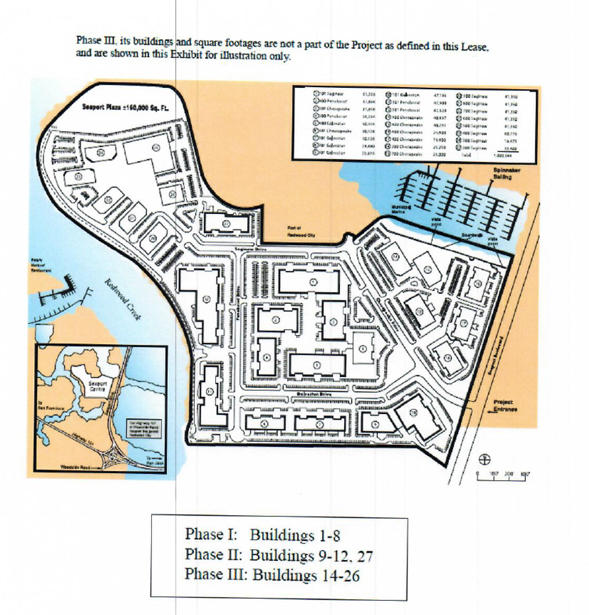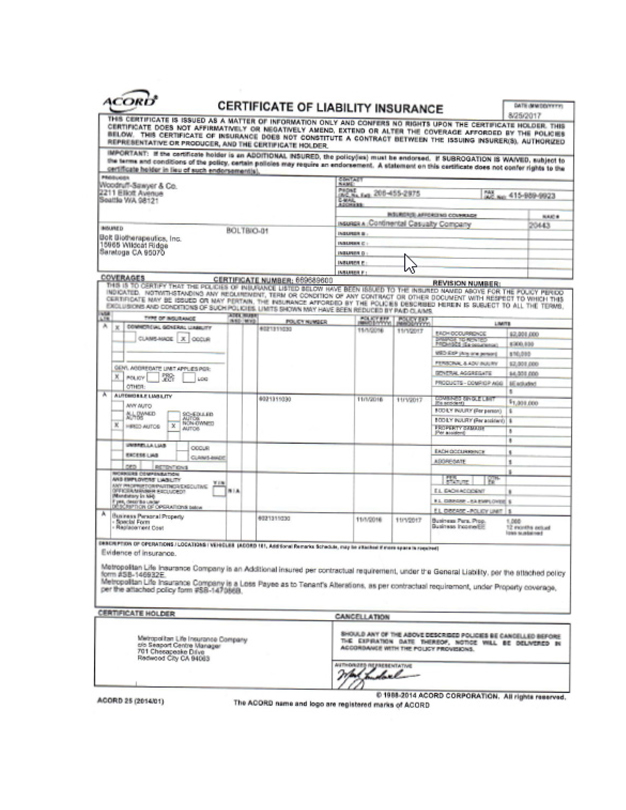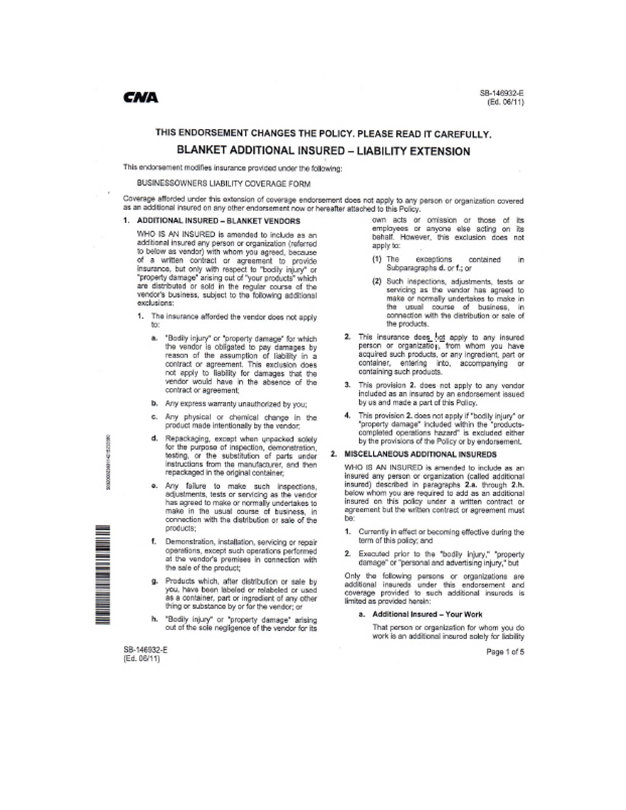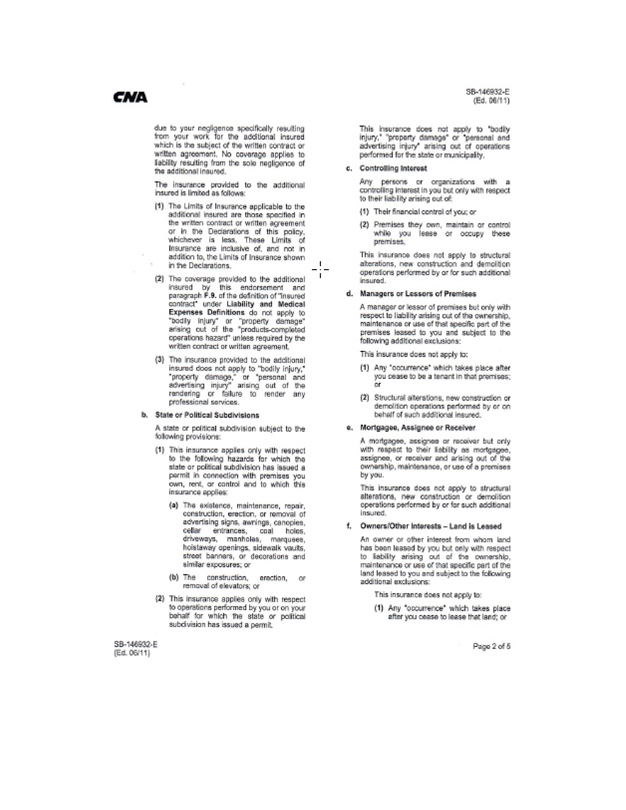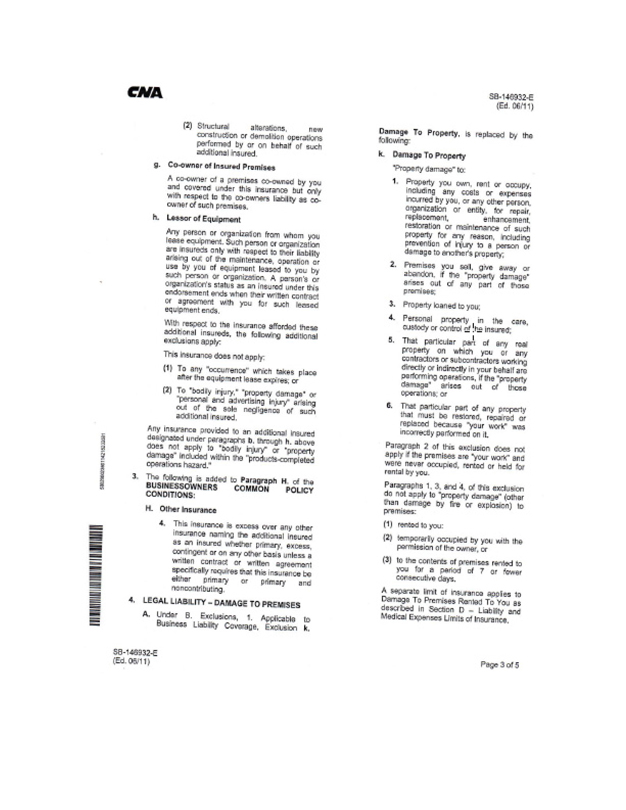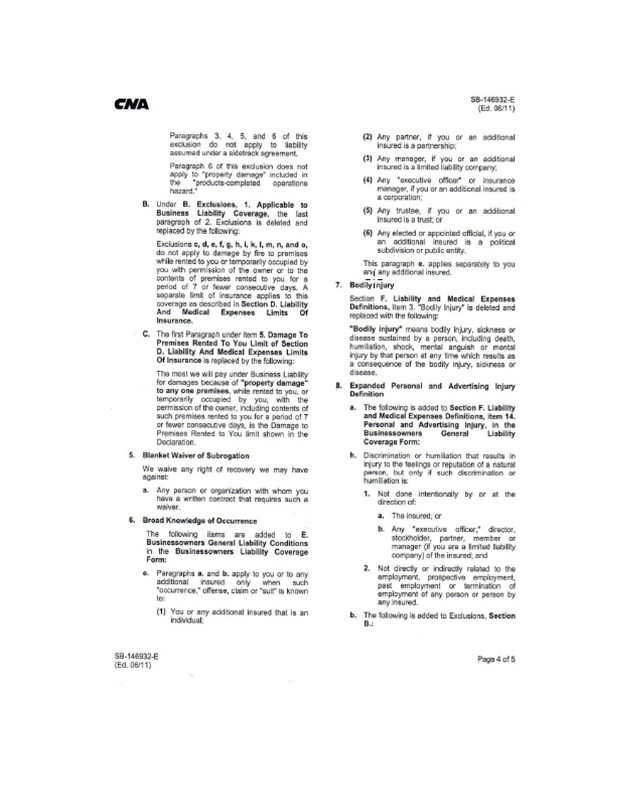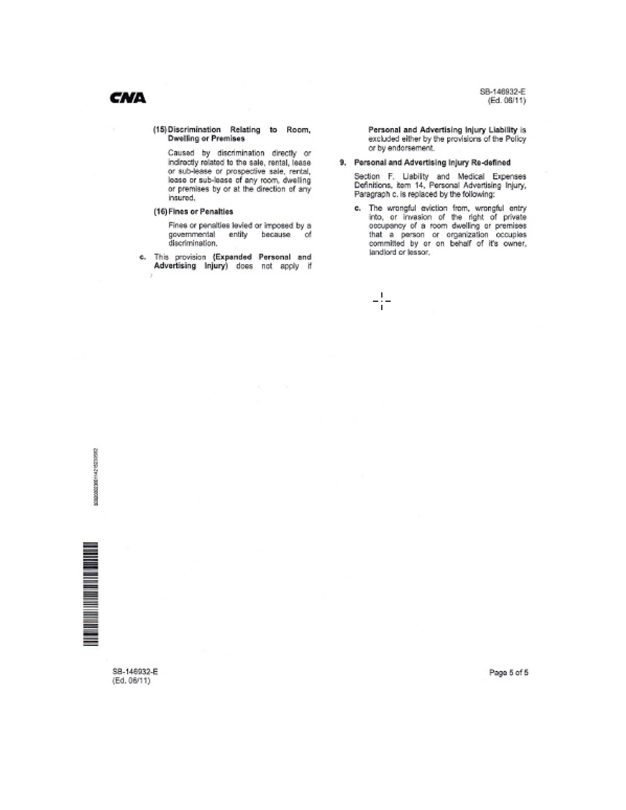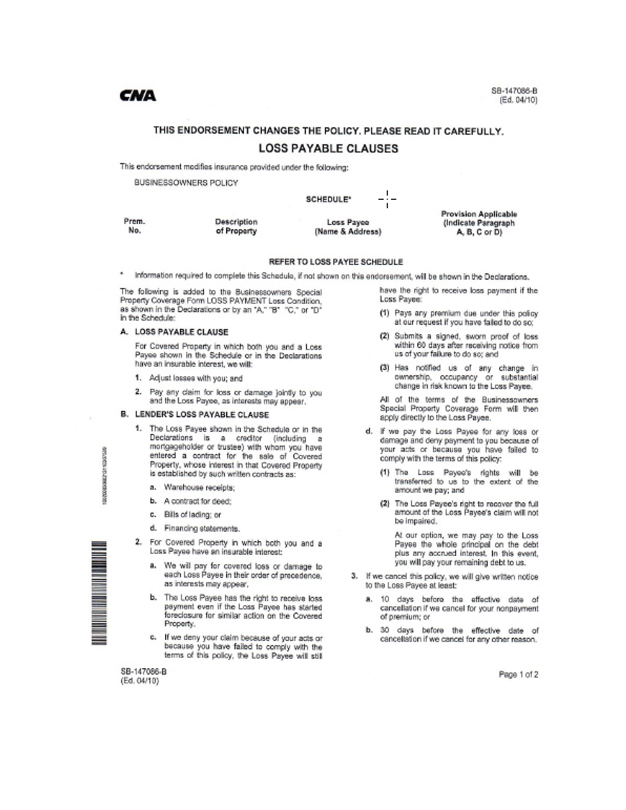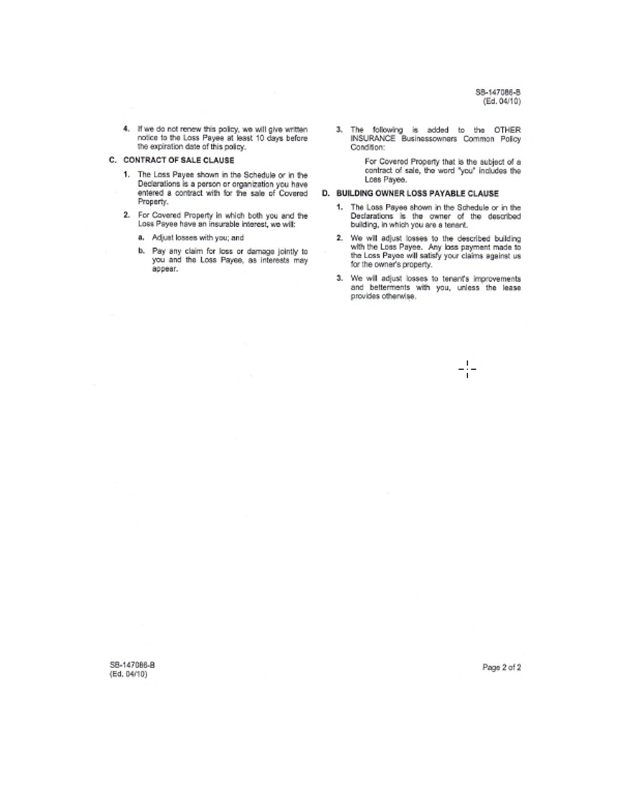BUILDING: Each building in which the Premises is located, as specified in Section 1.01(1).
BUILDING OPERATING EXPENSES: Those Operating Expenses described in Section 4.01.
COMMENCEMENT DATE: The date that is sixty (60) days following the Delivery Date.
COMMON AREAS: All areas of the Project made available by Landlord from time to time for the general common use or benefit of the tenants of the Building or Project, and their employees and invitees, or the public, as such areas currently exist and as they may be changed from time to time.
DECORATION: Tenant Alterations which do not require a building permit and which do not affect the facade or roof of the Building, or involve any of the structural elements of the Building, or involve any of the Building’s systems, including its electrical, mechanical, plumbing, security, heating, ventilating, air-conditioning, communication, and fire and life safety systems.
DEFAULT RATE: Two (2) percentage points above the rate then most recently announced by Bank of America N.T. & S.A. at its San Francisco main office as its corporate base lending rate, from time to time announced, but in no event higher than the maximum rate permitted by Law.
DELIVERY DATE: The later of the full execution and delivery of this Lease and the date of Landlord’s delivery to Tenant of possession of the Premises, if different from the Commencement Date, as provided in Rider 2.
ENVIRONMENTAL LAWS: All Laws governing the use, storage, transportation, disposal or generation of any Hazardous Material, or pertaining to environmental conditions on, under or about the Premises or any part of the Project, including the Comprehensive Environmental Response Compensation and Liability Act of 1980 (42 U.S.C. Section 9601 et seq.), the Resource Conservation and Recovery Act of 1976 (42 U.S.C. Section 6901 et seq.), the Hazardous Materials Transportation Act (49 U.S.C. Section 1801, et seq.); and Section 307 (33 U.S.C. Section 1317) and Section 311 (33 U.S.C. Section 1321) of the Clean Water Act of 1977 (33 U.S.C. Section 1251, et seq.), all as heretofore or hereafter amended.
EXPIRATION DATE: The date specified in Section 1.01(7) unless changed by operation of Article Two.
FORCE MAJEURE: Any accident, casualty, act of God, war or civil commotion, strike or labor troubles, or any cause whatsoever beyond the reasonable control of Landlord or Tenant, including water shortages, energy shortages or governmental preemption in connection with an act of God, a national emergency, or by reason of Law, or by reason of the conditions of supply and demand which have been or are affected by act of God , war or other emergency; provided, however, that nothing in this definition shall {a) permit Tenant to hold over in the Premises after the expiration or earlier termination hereof, or (b) excuse any of Tenant’s monetary obligations or any of Tenant’s obligations whose nonperformance would interfere with another occupant’s use, occupancy or enjoyment of its premises or the Building or the Project.
HAZARDOUS MATERIAL: Such substances, material and wastes which are or become regulated under any Law pertaining to environmental conditions, or which are classified as hazardous, toxic, medical waste or bio-hazardous waste under any Law; and explosives, firearms, ammunition, flammable materials, radioactive material, asbestos, polychlorinated biphenyls, acids, caustics, gasoline, kerosene, natural gas, propane, oil, petroleum, petroleum products and by-products. Hazardous Material shall include by way of illustration, and without limiting the generality of the foregoing, the following: (i) those substances included within the definitions of “hazardous substances,” “hazardous materials,” “toxic substances” or “solid waste” under all present and future Laws relating to the protection of human health or the environment, including California Senate Bill 245 (Statutes of 1987, Chapter 1302); the Safe Drinking Water and Toxic Enforcement Act of 1986 (commonly known as Proposition 65); the Comprehensive Environmental Response, Compensation and Liability Act of 1980 (42 U.S.C. Section 9601 et seq.); the Resource Conservation and Recovery Act of 1976 (42 U.S.C. Section 6901 et seq.); the Hazardous Materials Transportation Act (49 U.S.C. Sections 1801, et seq.): Section 307 (33 U.S.C. Section 1317) or Section 311 (33 U.S.C. Section
4
